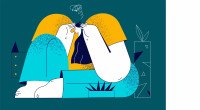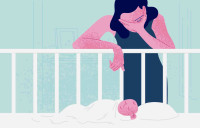As it is
Introducing alternative mediums of instruction to early grade teachers
Including the arts in education can provide curricular access to those with diverse learning styles..jpg&w=900&height=601)
Niranjan Kunwar
To prepare for a printmaking lesson with primary school students, Priyanka Singh Maharjan, a graduate of Kathmandu University’s School of Arts, used flat pieces of cardboard. She instructed students to observe windows of the Ganabahal neighborhood and cut around the periphery of the cardboard pieces to imitate different designs and shapes. Then she asked them to paint over their cardboard windows and print colourful shapes on white sheets of paper. Students were then asked to pay closer attention. How had people used the empty window spaces? Some had placed flower pots, while others had stacked a random collection of objects. And if one were to look outside from a window, one could even spot a bird or a kite. Maharjan, along with her colleagues Manantuna Jyapoo and Rumi Maharjan, then demonstrated how to draw and cut out one of these things from another piece of cardboard and glue them inside the earlier cardboard window. These shapes were coloured and reprinted over the first print of the windows.
Educating through the arts
Apart from cardboard, the art educators also handed out lumps of clay to create reliefs. Using pencils, students carved various designs on these flattened lumps, coloured them and printed their artworks on another set of paper. Over the course of the school year, apart from printmaking, students and teachers of Nepal Adarsha Secondary School were also introduced to preliminary techniques of three other art mediums—drawing, painting and collage—in a methodical and systematic way. During the drawing lessons, students learnt about different kinds of lines, textures and patterns. During the collage lessons, students used natural and found materials, as well as strips of colourful paper, to overlap and arrange. And during painting, they learnt how to mix colours and examine the viscosity of various fluids.
These lessons are part of a programme titled ‘Art in School’ spearheaded by Srijanalaya, a non-governmental organisation that is committed to the arts in education, a concept that is often confused with the simpler and more direct term, arts education. While arts education usually refers to basic art classes, ‘arts in education’ is an expanding field informed by progressive educational philosophies that recommend an integrative and interdisciplinary approach to lesson planning. Practitioners committed to the arts in education are interested in exposing learners to various mediums of learning so that they can find one that matches their interests and learning styles. Since the education system is largely dominated by texts, the arts can also support those who intrinsically struggle with language. Furthermore, the different artistic mediums can provide multiple ways to explore and express, and to make connections between seemingly disparate subject matters.
Recent educational reforms in Nepal mandate this kind of integrative approach to early grade instruction but there is a large gap between the policies and the reality inside classrooms. Without an immersive exposure to alternative forms of instruction, teachers and administrators are frustrated that they do not have the necessary skills or knowhow to implement this kind of novel pedagogic vision. Local education experts agree that the inclusion of different mediums and methods of teaching will provide more access to young students, and as a result, they might become more expressive and confident learners. But the state of public education in Nepal continues to deteriorate due to severe political and logistical hurdles.
That is why members of Srijanalaya have been going to local schools for the past few years and sparking discussions with staff members in order to orient them to these ideas. At Nepal Adarsha, the art educators recently wrapped up the programme’s first year. To acknowledge the work of the school community, they conducted a short programme inside the school premises on the first Friday of March. Artworks of students were displayed inside a hall and groups of students and teachers visited the exhibition to appreciate and celebrate each other’s work. Towards the end of the day, highlights of the programme were shared with the larger school community and with other members of Srijanalaya, as well as with representatives of Daya Foundation, which provides financial and logistical support to educational initiatives such as Art in School.
Creating communities
Established in 1951 and located close to the heart of Kathmandu, Nepal Adarsha is one of the oldest and most well-known public schools of the country. But as is the case in almost all government schools, only the poorest and the most marginalised students are enrolled. What is the use of the arts to these children, a cynic might ask. Are they not going to eventually drop out to find menial jobs? In a world that is getting increasingly inhospitable for the most vulnerable, what choices do these students have other than succumbing to the market as mere human resources? But those of us concerned with the state of education ought to take a leap of faith. We must understand that education is inherently political and involves more than just a regurgitation of superficial textbook facts - it is about shaping minds, forming communities and envisioning a more prosperous future. The Arts in School programme is, along the lines of scholar Maxine Greene, an attempt to create a situation that is “infused with a kind of imaginative awareness that enables those involved to imagine alternative possibilities for their own becoming and their group’s becoming.”
Greene goes on to argue that the creation of these situations will add something new each day to a learner’s life. And art experiences will inevitably “open perspectives and move the young to look and listen, to overcome the taken-for-granted and the routine”. That is why, to prep for a lesson on collages, students from grades three and four were taken to Bhugol Park and trained to observe their surroundings meticulously. They were then taught how to carefully replicate the foreground, the middle ground and the background in their artworks. After returning to their classroom, students tore pieces of paper and made mosaics based on their sketches.
Since the overarching goal of the programme is to equip participating teachers with these basic skills so that they can continue the work on their own, separate orientation sessions were conducted with them before beginning a new art medium. These sessions familiarised teachers with the techniques and also gave them an idea of the time needed to gather and prepare materials. After the completion of each unit, a reflection session was also scheduled with teachers so that they could share their observations and clarify misconceptions. During the March wrap-up program, the art educators also shared their own successes and challenges with the audience. They thanked the teachers and administrators for their patience and overall support. They explained how everyone had gradually gotten more comfortable with the art lessons. The quieter ones had opened up and become more confident. By the end of the year, there was palpable enthusiasm and appreciation for these art classes.
Despite the challenges—mainly regarding coordination, scheduling and budget—the Art in School team hopes to continue the programme at Nepal Adarsha during the upcoming school year so that more art mediums can be introduced. They also hope that teachers will create lesson plans for the core subjects—math, science and social studies—using ideas and techniques from the art lessons. The application of novel artistic techniques across the curriculum will provide learning pathways to diverse students and get them more engaged and motivated.
Kunwar writes about arts and education and can be reached at [email protected]




 7.12°C Kathmandu
7.12°C Kathmandu










